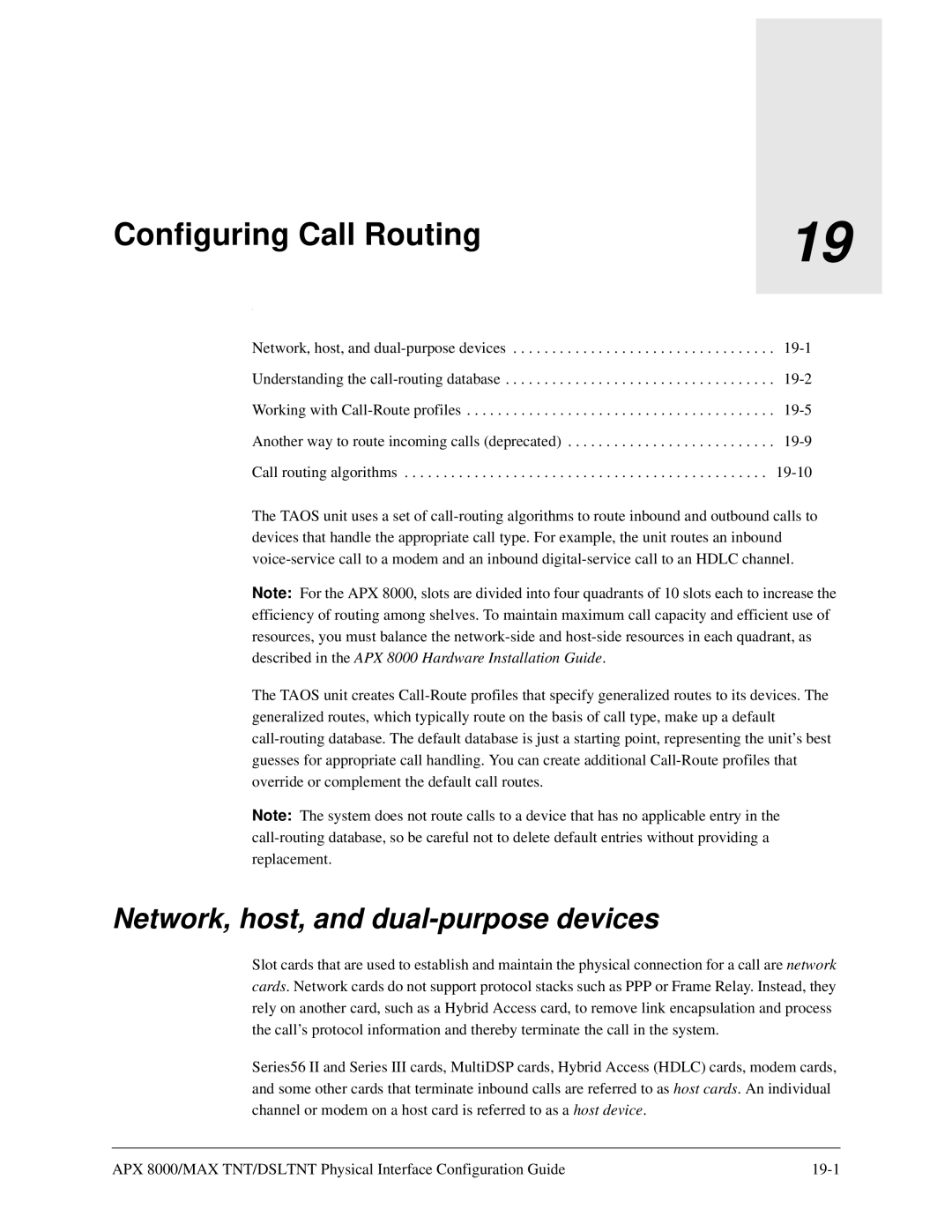Configuring Call Routing | 19 |
| |
|
|
:
Network, host, and
Understanding the
Working with
Another way to route incoming calls (deprecated) . . . . . . . . . . . . . . . . . . . . . . . . . . .
Call routing algorithms . . . . . . . . . . . . . . . . . . . . . . . . . . . . . . . . . . . . . . . . . . . . . . .
The TAOS unit uses a set of
Note: For the APX 8000, slots are divided into four quadrants of 10 slots each to increase the efficiency of routing among shelves. To maintain maximum call capacity and efficient use of resources, you must balance the
The TAOS unit creates
Note: The system does not route calls to a device that has no applicable entry in the
replacement.
Network, host, and dual-purpose devices
Slot cards that are used to establish and maintain the physical connection for a call are network cards. Network cards do not support protocol stacks such as PPP or Frame Relay. Instead, they rely on another card, such as a Hybrid Access card, to remove link encapsulation and process the call’s protocol information and thereby terminate the call in the system.
Series56 II and Series III cards, MultiDSP cards, Hybrid Access (HDLC) cards, modem cards, and some other cards that terminate inbound calls are referred to as host cards. An individual channel or modem on a host card is referred to as a host device.
APX 8000/MAX TNT/DSLTNT Physical Interface Configuration Guide |
